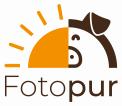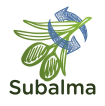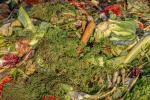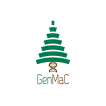LECA Operational Group: Development of dairy products derived from goat's milk
- Type Operational group
- Status In progress
- Execution 2021 -2023
- Assigned Budget 278.602,59 €
- Scope Autonómico
- Autonomous community Andalucía
- Main source of financing CAP 2023-2027
- Project website GO LECA
INNOVATION IN NEW PRODUCTS
At the technological level, the project will investigate different pasteurization, skimming, and fat incorporation treatments using a combination of different temperatures and times, suited to goat's milk, a product characterized by its low physical stability under heat treatment. To improve the product's sensory properties, different skimming levels will be tested on the product and their impact on consumer acceptability.
It is important to act on the microbial load and the derived enzymes, since, due to their lipolytic activity, they produce greater amounts of short-chain fatty acids, which enhance and intensify the characteristic flavor and aroma of goat's milk. To make the product more attractive to the end consumer, and as an innovation, different ingredients will be added to the butters to reduce the intense odor and flavor caused by the short-chain fatty acids.
The implementation of this innovative project will provide the dairy goat sector with methodologies and products that will extend the shelf life of goat milk and increase its added value, a major challenge for the Andalusian goat industry. The quality of goat milk will be improved in terms of its nutritional content and flavor, as well as increased product processing, with the aim of significantly increasing consumption. A distinctive feature of goat milk is its absence of carotene, which gives it its completely white color.
Carotene is the promoter of vitamin A, which must be converted by the body in the thyroid gland. Goat's milk does not contain carotene, but rather vitamin A, completely available for assimilation, without intervention by the thyroid gland. This is very important for infants, because their thyroid function is barely developed. While the vitamin B6 and B12 content is lower than cow's milk, it is similar to human milk, making it suitable for infant nutrition.
Like almost all milks, its iron content is slightly deficient, but industrial technology now allows for adequate iron supplementation. It's worth noting that the levels of essential amino acids are similar between goat's milk and cow's milk, and both meet or exceed the requirements established by the FAO for children. The same is true for essential fatty acids. The great advantage of goat's milk is its greater digestibility, due to the characteristics of fat, protein, and the coagulation that forms in the stomach. Milk fat is presented in globules, which in the case of goat's milk are smaller. Nearly 30% of them have a diameter between 2 and 4 microns, while in cow's milk these values are 10 to 20 microns. The fat globules, being smaller, remain dispersed in the milk longer, which facilitates the activity of intestinal digestive enzymes, resulting in easier digestion. It also contributes to digestion that nearly 20% of the fatty acids in goat's milk are short-chain (C4 and C6). Casein is the main protein in milk and is what forms the curd in the cheesemaking process; something similar happens in our stomach when we ingest milk and it comes into contact with gastric juice.
The coagulum formed in goat's milk is softer and breaks down more easily, facilitating enzymatic digestion. This coagulum breaks down into very small particles that dissolve more quickly under the action of proteolytic enzymes in the intestine. Goat's milk is recommended for people with digestive problems such as ulcers, gastritis, and liver disorders who cannot consume cow's milk. Regarding allergies, particularly those due to bovine milk proteins, goat's milk can be tolerated.
INNOVATION IN PROCESS TECHNOLOGIES
The model dairy plant to be worked on belongs to the DCOOP group and is highly automated. This project aims to further analyze the plant's technological status and improve energy efficiency to reduce environmental impacts by including tools for monitoring and recording energy consumption of the circulation pumps and the thermization, skimming, and filtration concentration equipment.
This monitoring, using ICT tools, will create a database that will help us better understand how the plant operates from an energy perspective and thus optimize it to the maximum. In addition, the material balance and water consumption will be recorded and monitored. This last aspect is where the goal is to give added value to this "goat water" to reduce mains water consumption as much as possible and contribute to the circular economy by revaluing this byproduct of the dairy industry.
INNOVATION IN ICT TECHNOLOGIES
A new channel will be created through the YouTube platform to maintain consumer potential and establish a communication plan through a website, social networks and digital platforms to inform regular consumers of the advantages and differentiating characteristics of goat's milk compared to other types of milk.
Andalusia is the leading producer of goat milk, with more than 156 million liters, representing 46% of the national total. It also has more than 2,200 farmers and is the autonomous community with the greatest diversity of native breeds, a total of 29, of which four are high-production breeds recognized worldwide. Regarding production, dairy goats stand out compared to meat goats. Despite this, most of the milk is sold in bulk, so the added value generated does not directly impact producers, leading to stagnation in regions dedicated to extensive goat farming.
This is a sector that offers significant benefits, both economically, socially, environmentally, and for consumer health, as goat's milk stands out for its nutritional and functional values. However, it faces several factors that limit its competitiveness, such as limited industrialization and consumer disinterest in goat's milk.
This GO is born from the interconnectedness of the challenges and opportunities of the Andalusian goat sector. Innovation is essential for consumers to value and consume its products and to focus industrial activities on greater efficiency in production and use of water and energy resources.
- To digitally promote the nutritional and functional benefits of goat's milk consumption to the end consumer and the environmental sustainability of its production.
- Strengthen the Andalusian goat sector by developing new products adapted to the seasonality of goat milk production, which increase added value and are innovative for the consumer.
- Reusing byproducts generated in the industrial milk process to boost the circular economy.
- Optimizing energy and water efficiency at the goat milk processing plant with energy and water consumption monitoring tools to reduce environmental impacts.
- Recipes will be developed so that the end consumer can prepare them.
To highlight the value of goat's milk and propose a way to improve the Andalusian goat sector in order to boost its competitiveness in the market.
Innovative techniques will be applied to develop new goat dairy products with high microbiological and nutritional quality through integrated actions throughout the food chain, such as the incorporation of environmental sustainability measures, water and energy resource efficiency, and the revaluation of by-products. One of the challenges is to foster consumer interest in goat milk, for which sweet and sour creams, yogurts, butter, and ice cream will be produced. Industrialization will also be promoted.
- Coordinator/entity name: Dcoop S.Coop.And. Food Group
- Postal address: Ctra. Cordoba s/n. CP. 29200 Antequera, Malaga
- Coordinator/entity email: silvia.lopez@dcoop.es
- Telephone: 952841451
- Grupo alimentario Dcoop S.Coop.And.
- CICAP (bplazuelo@cicap.es)
- Cooperativas Agro-alimentarias de Andalucía (cdiaz@agroalimentarias-andalucia.coop)
- Grupo alimentario Dcoop S.Coop.And.







